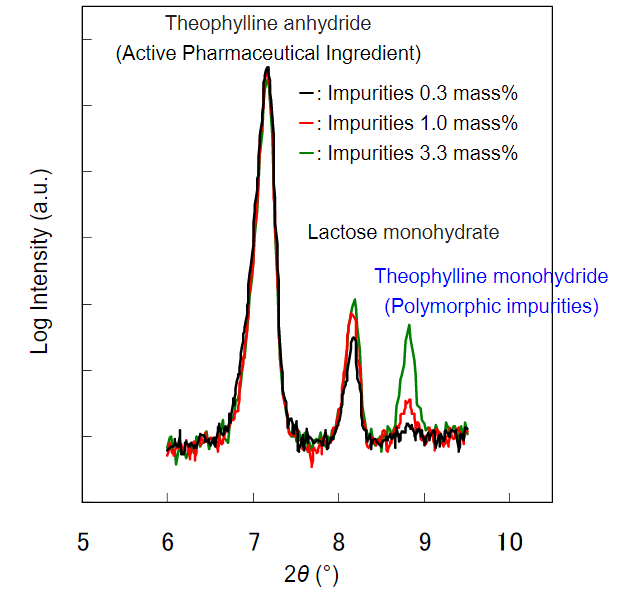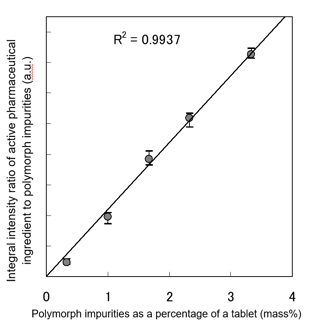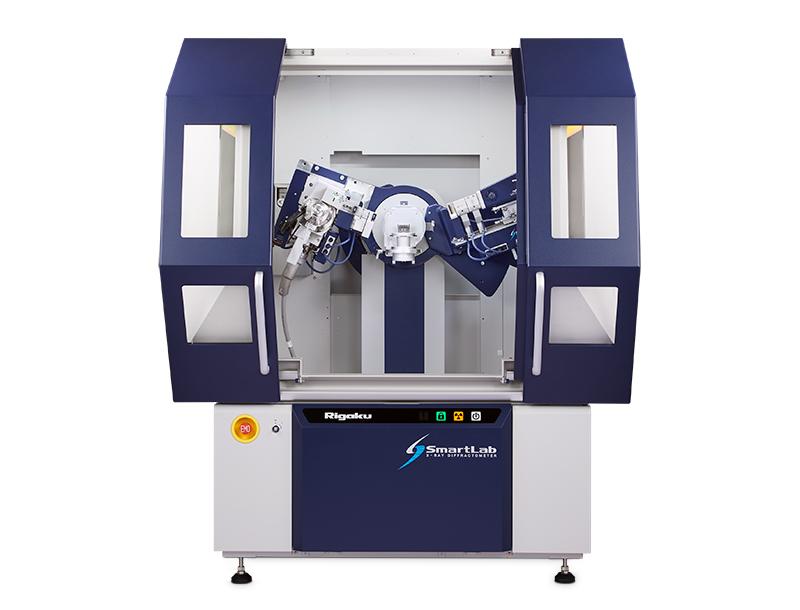QUANTITATIVE ANALYSIS OF POLYMORPH IMPURITIES OF TABLETS BY TRANSMISSION X-RAY DIFFRACTION
INTRODUCTION
In the tableting process for pharmaceuticals, it sometimes happens that the active pharmaceutical ingredient reacts with materials used as excipients, such as sugar or starch, and dehydration reactions, polymorph transitions and other processes may occur due to the pressure during tableting. In recent years, a need has arisen to check, in the shortest possible time, whether or not the active pharmaceutical ingredient maintains its original crystal system, and whether or not there are polymorph impurities. Furthermore, this must be done in the tableting process, while maintaining the tablet form. Therefore, we used a powder X-ray diffractometer to non-destructively measure the state of tablets in their original form, and evaluate the presence of the contained active pharmaceutical ingredient and polymorph impurities. By using a transmission-type parallel beam optical system, it is possible to obtain an accurate diffraction profile which does not depend on the sample form, and acquire information not only from the outside, but also from the inside of tablets. As a result of measurement, it was found that if polymorph impurities of the active pharmaceutical ingredient are about 1%, then their presence in the tablets could be confirmed in a measurement time of less than 10 minutes.
Measurements and Results
A model sample was prepared in which part of the active pharmaceutical ingredient underwent a polymorph transition during tableting. Theophylline anhydride, a substance known as a bronchodilator, was used as the active pharmaceutical ingredient, and theophylline monohydride was mixed into the active ingredient as a pseudo-polymorph impurity. To 1 part of this mixture, we added 2 parts (by weight) of a standard excipient (a mixture of lactose and starch), formed the material into tablets with a diameter of 6 mm and thickness of 3 mm, and conducted X-ray diffraction measurement using the transmission method. As shown in Fig. 1, when polymorph impurities in the active pharmaceutical ingredient were at a low level of 1 mass% (0.3 mass% with respect to the entire weight of the tablet), then detection was possible in about 10 minutes of measurement, and a calibration curve highly correlated with the active ingredient was obtained, as shown in Fig. 2.

Fig. 1: Evaluation of pseudo-polymorph impurities contained in tablets
Fig. 2: Correlation of active pharmaceutical ingredient and pseudo-polymorphs
Samples provided by: Dr. Katsuhide Terada, Toho University
Recommended equipment
► Automated multipurpose X-ray diffractometer SmartLab
► Automated multipurpose X-ray diffractometer SmartLab SE
RIGAKU RECOMMENDS
AUTOMATED MULTIPURPOSE X-RAY DIFFRACTOMETER SMARTLAB

